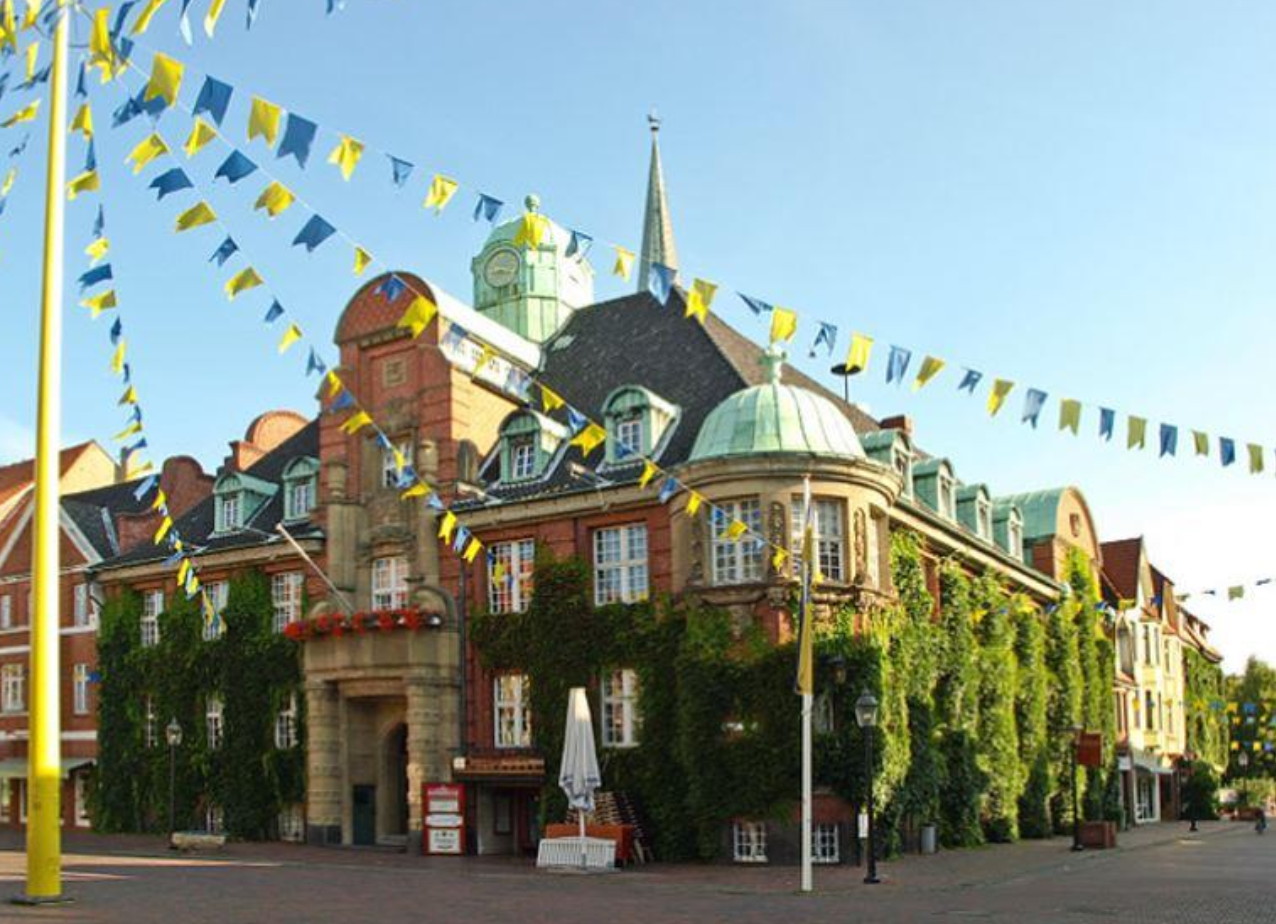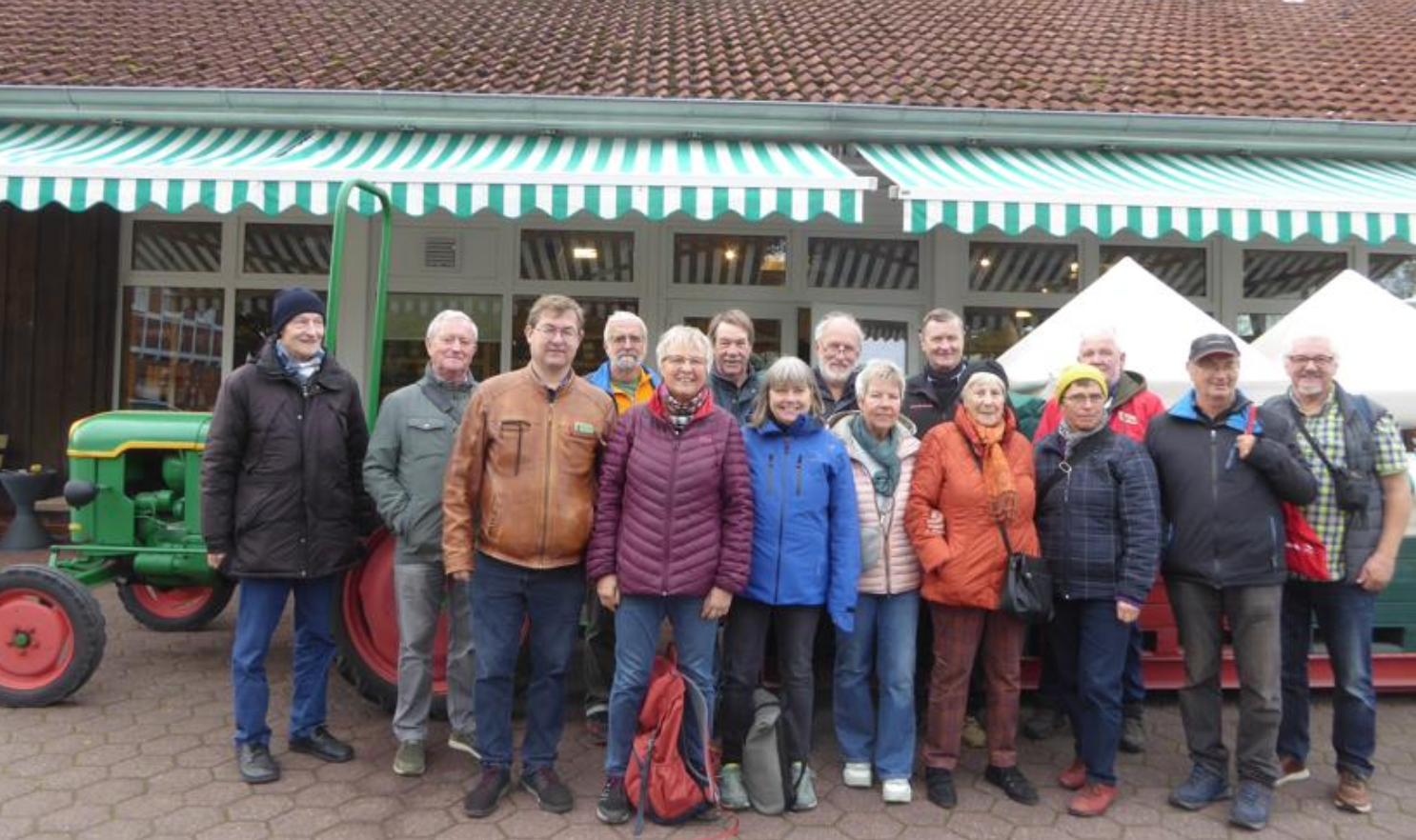Joint CiF/CCI Chess Meeting in Buxtehude, October 10-13
The first joint meeting of CiF and CCI started on Thursday, October 10, 2024, with most of the participants arriving at the ‘Zur Mühle’ hotel in Buxtehude. The first lively discussions took place during dinner at the ‘Märchenhaft’ restaurant. On Friday, October 11, the program included a trip to Hamburg. We took the S-Bahn from Buxtehude to the landing bridges in Hamburg. A harbor launch from the Barkassen-Meyer company was waiting for us there at 11 a.m. at bridge 6. The round trip through the Port of Hamburg passed several large container ships. The captain regaled us with many anecdotes from seafaring life and the history of the port during the entertaining hour we spent on the trip through various harbor basins
Entrance to the old Elbtunnel at the Landungsbrücken
We used the time before the planned visit to the Elbphilharmonie in the afternoon for a walk to the Old Elbtunnel. The entrance is located directly at the Landungsbrücken. The 426-meter-long tunnel is used today to explore the winding corners of the harbor and to get to Wilhelmsburg or the Alte Land.
The Old Elbe Tunnel, opened in 1911, was built to serve as a connecting route between the Landungsbrücken and the district of Steinwerder for harbor and shipyard workers. Originally an engineering innovation, the tunnel became a tourist attraction at the latest after the opening of the “new” Elbe Tunnel in the 1970s and the construction of further new bridges in the harbor.
A building with a green dome at the Landungsbrücken indicates the tunnel running under the Elbe, which has been a listed building since 2003. Elevators take pedestrians and cyclists down into the depths, while cars use the hydraulically operated elevator cages and pay a fee of two euros.
The Old Elbe Tunnel is certainly not comparable to newfangled tunnels, because the light from the side lamps gives the vaulted and tiled tubes a very unique atmosphere. The tunnel view is a very popular photo motif. Reliefs in the shape of starfish or dolphins also adorn the walls. Art exhibitions, such as the Elb-Art, which took place annually until 2009, presented national and international contemporary art in the tubes.
We passed through the Old Elbe Tunnel in heavy bicycle and foot traffic and emerged back into daylight in Steinwerder, where we had a beautiful view of the sunlit Landungsbrücken. Some of the participants were starting to feel hungry, so we headed back to the other side. We treated ourselves to a delicious fish roll at one of the numerous food stands. Finally, fortified, we strolled along the promenade towards the newly developed Hafencity.
Our destination:

The Elbphilharmonie, where we had booked a one-hour tour of the music halls. The tour through the interior of the imposing building was fantastic. We learned a lot from our tour guide about the history and construction of the Elbphilharmonie, especially about the structural measures taken to raise the sound quality in the halls to the highest level. The tour ended with a stop at the viewing platform, which offers a wonderful panoramic view of the harbor on the one hand and the city center of Hamburg on the other.
On Saturday, October 12th, we took it a little easier. The program included a guided tour through the city center of Buxtehude, which has been allowed to adorn itself with the title of Hanseatic city since 2012.

Old town hall of Buxtehude
Our tour was scheduled for 1.5 hours, but it ended up taking more than two hours because our tour guide was very informative. He told us many stories from the history of the city. Buxtehude may also be known to many through the fairy tale by the Brothers Grimm, who described the race between the hare and the hedgehog. But the tour also told us some lesser-known stories, for example, the question of why in Buxtehude the dogs bark with their tails was answered. But how it came about will not be revealed here. If you want to know, you have to come to Buxtehude yourself.
The place was first mentioned in a document in 959, but it was not until 1285 that it received city rights from the Archbishop of Bremen. Together with the larger district town of Stade, Buxtehude belonged to the Hanseatic League for a long time. During the Thirty Years’ War, the city experienced various occupations by Danish and later Swedish troops (until 1715). From 1811 to 1814 there was a French occupation.
The city may be known for its women’s handball team, BSV, which has been playing in the 1st Bundesliga without interruption since 1993 and has partially qualified for European competitions.
Of cultural interest is the ‘Buxtehuder Bulle’, which has been awarded annually since 1971 to authors of children’s and youth books.
Important buildings are the St. Petri Church, which was completed around 1320, the Zwinger, of which there were originally five, and the town hall, which was rebuilt after a fire in 1913. The local history museum, the former grain mill and various town houses are also noteworthy and listed buildings.
After a short break, we got into several cars at around 2:00 p.m. and drove to the Altes Land. This is the name given to the area around Jork, which is considered the center of the region. The Altes Land claims to be the largest contiguous fruit-growing area in Europe. It is bounded by the course of the Elbe to the north, Stade to the west, and Hamburg to the east. Fruit-growing, with more than 90% of the area, is dominated by various types of apple, while other fruits such as cherries, pears and plums play only a minor role. The fruit-growing research institute in Jork is responsible for developing new varieties.
At 2:30 p.m., we were expected at the Matthies fruit farm for a tour that lasted about an hour. A member of the staff told us many interesting facts about fruit growing in general and about the Matthies company in particular. At the end of the tour, we were able to taste three delicious apple varieties (Santana, Welland and Gala). Afterwards, we strengthened ourselves in the company’s own café with coffee and tasty cake.

Group photo of the participants at the Matthies fruit farm
We let the afternoon fade away with a side-trip to the Lüheanleger, directly situated at the fairway of the river Elbe. Of course we hoped for a rainless day, but it was not really nice. At the Lüheanleger are some sales vehicles offering snacks, fish rolls and ice cream. Especially in summer this is a popular destination for bikers, campers and day-trippers. Then we went back to the hotel.
We spent all three evenings together in different restaurants near the hotel. On Sunday, after breakfast, it was time to say goodbye again. Will there be another joint meeting of CiF and CCI? There would certainly be many other worthwhile attractions in the region to visit, e.g. our district town of Stade, but the program seemed to be well filled for two days.
Margret and Hans-Peter Tödter
